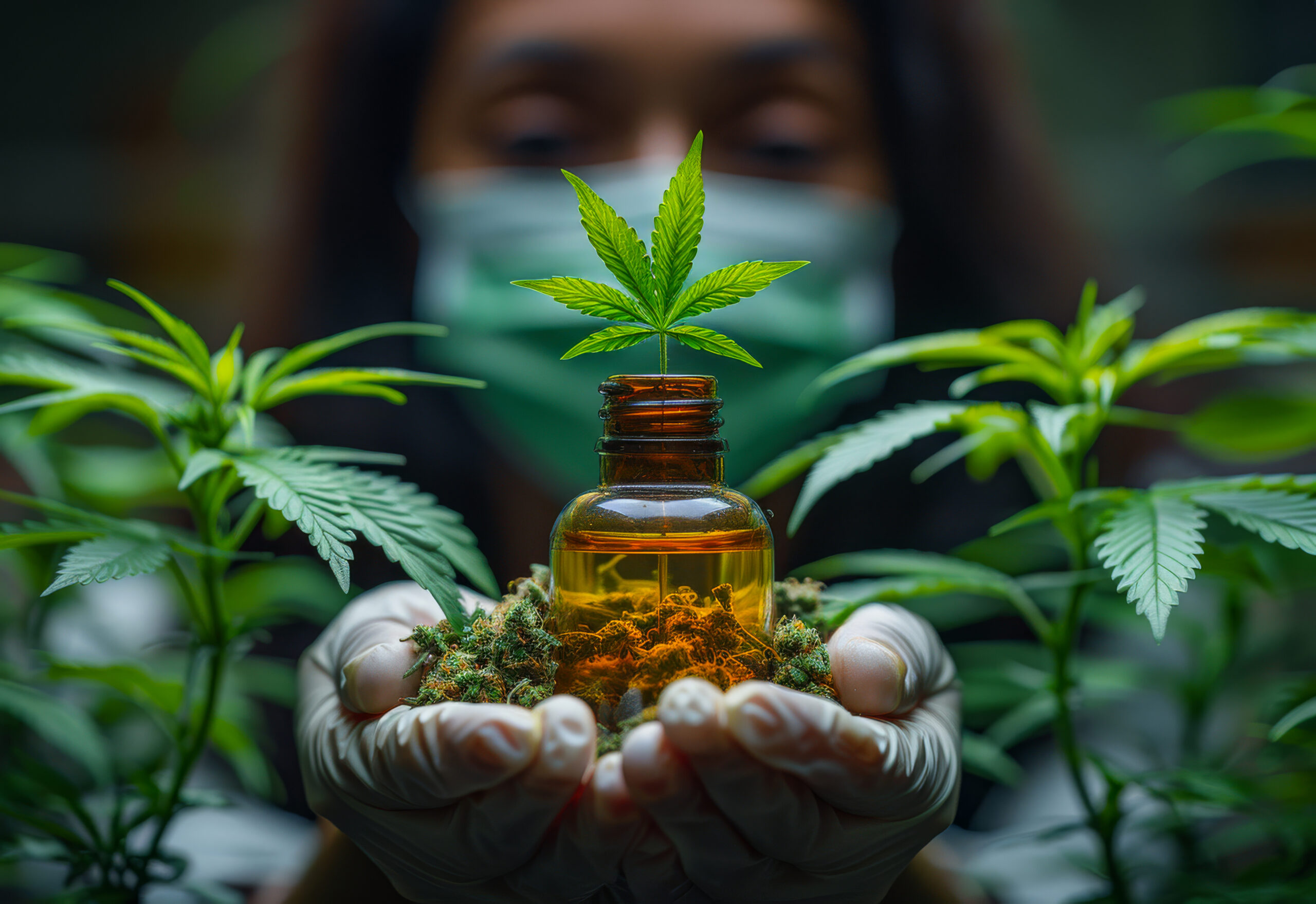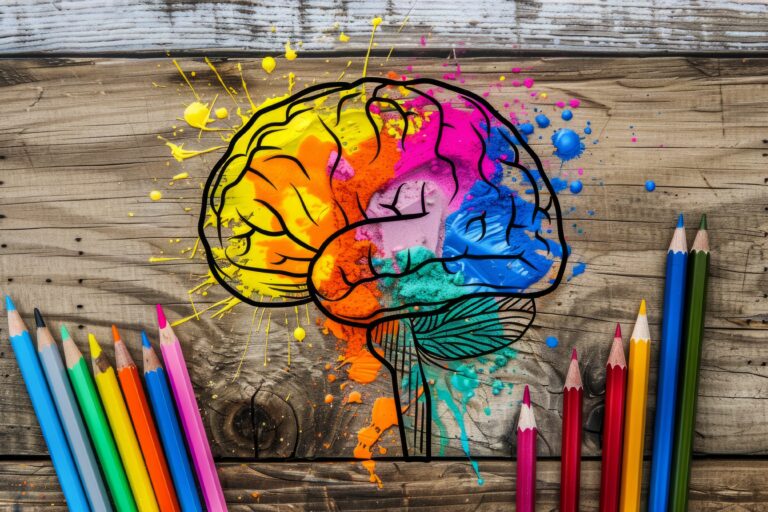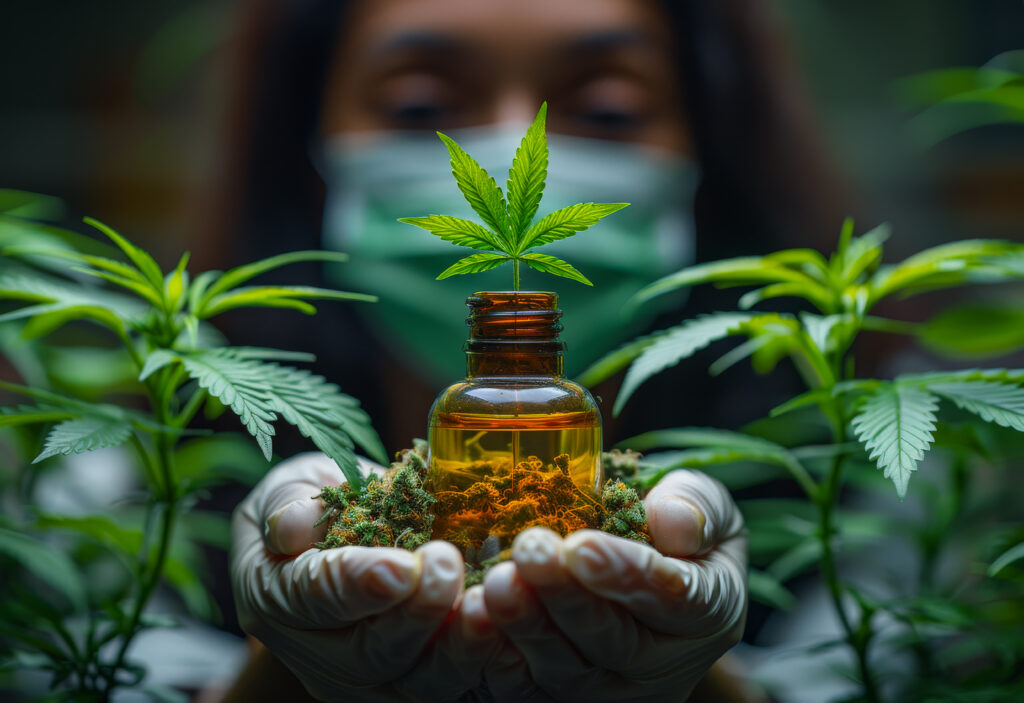
“Cannabis is the most versatile and potentially beneficial plant on Earth, and we’re only beginning to understand its incredible capabilities.” – Steve DeAngelo
Living with a hypersensitive body means navigating a minefield of side effects. My medical history is full of strange reactions, with my endocrine system being particularly finicky. Seeking alternatives to therapy and conventional medicine, I explored traditional remedies. Mandarin oranges helped my stomach issues, lavender calmed my nerves, and honey’s benefits are well-known. Yet, it was cannabis that ultimately provided the relief of so many of my body’s natural quirks.
Like many, I smoked cannabis in high school for a while, but a bad experience deterred me for years. Twenty years later, disillusioned with pharmaceuticals that never seemed to work, I turned back to cannabis and it was one of the best decisions I could have made for myself. I found a much-needed sense of calm and clarity. And from there my whole world changed.Both necessity and a desire to understand it better drove this return to cannabis. I immersed myself in research by taking a cannabis course on Coursera and conducting numerous experiments. I found that high-CBD, low-THC hybrids work best for me, a fortunate match given I live in Texas where THC regulations are more stringent. With evolving cannabis laws, I’m hopeful that research will advance, and these articles serve that purpose for me. My insatiable curiosity drives me to learn and share knowledge, as teaching what I’ve learned helps reinforce it. Join me as I explore cannabis, tracing its journey from ancient uses to modern applications.
Timeline of Cannabis: Science and Culture

Ancient Times
Cannabis is a thread in human history, connecting people across cultures and time for thousands of years. It’s like a river we keep returning to—one that nourishes both body and mind, despite our incomplete understanding of it. Around 2700 BCE, Emperor Shen Nung in China was already dipping into that river. He was compiling his “Pen Ts’ao Ching,” one of the earliest medical texts. In it, he noted cannabis’s ability to ease pain and heal different ailments, long before the science was there to back it up. I find it interesting that ancient wisdom still rings true today. Shen Nung based his understanding on lived experience. It’s like how many of us find a plant’s benefits through our own trials.
In India, the connection between cannabis and spiritual practice runs deep. The Vedas, sacred texts from 1500 to 500 BCE, mention “bhang.” A form of cannabis used to enhance rituals, festivals, and for medicine. People valued it as a tool for changing consciousness. Many today use cannabis for the same reason: to shift their perspective, which is a different kind of relief. This is where it benefits me the most. As an overthinker, I often get trapped in a cycle. I explore every possible scenario, even the unlikely ones. I then consider the consequences of each. It’s not something I’ve ever been able to switch off. Cannabis gives me a reprieve.
Let me explain, because people tend to equate that statement with: I become lazy; but that is far from the case. Cannabis helps slow my thought process. Example: I feed my audiobook addiction while listening at 2x speed. Otherwise I struggle to keep fully engaged. Listening at normal speed, I get distracted, which decreases my immersion in the story and hinders retention.(As someone who loves to learn, that won’t do.) When I smoke, I slow down. The movie in my head and the words streaming in my ears are in perfect sync. I stop obsessing over what will happen next, and allow myself to be led. I can experience the moment, instead of getting consumed by analysis. When I am writing, I get the same effect. This time it allows me to turn off the mental editor and enjoy the process of creating.
Even in ancient Egypt, we see this same dance between science and spirituality. The Ebers Papyrus and Ramesseum Papyri are among the oldest medical texts. They mention hemp, a strain of cannabis, as a treatment for inflammation and glaucoma. It’s wild to think that modern science has confirmed what they already knew, that this plant could heal. They didn’t have clinical trials, but they had experience, and that was enough. For them, it wasn’t only about healing the body but keeping the spirit aligned too, a holistic view we’re only now starting to reconsider.
Then there were the Scythians. They were warriors from around 500 BCE. They used cannabis in burial rights and to communicate with their gods. Cannabis was a gateway, a bridge to something beyond the physical. It’s funny, since it would later be referred to as a gateway drug which would lead to the use of other drugs, yet studies have shown it can achieve the opposite. Ancient cultures used cannabis to seek spiritual experiences. Today, we use it to unlock parts of ourselves. We seek creativity, healing, or a better connection to ourselves and the present.
When learning of all these ancient practices, I can’t help but think of how I stumbled into cannabis during the pandemic, feeling like the ground beneath me had shifted. The shift wasn’t just easing the anxiety I was dealing with, but about finding something that helped me feel like a person again. It felt like rediscovering a forgotten thing. Or joining a long-running conversation I never knew existed. Like those before us, I turned to cannabis for relief, clarity, and transcendence. I found its ability to center me when the world felt off-balance.
Cannabis is more than a plant, it’s an ongoing subplot of human history. Reminding us that the answers we seek may have been here all along. And while science is starting to catch up to ancient wisdom, for me, it’s personal. It’s about stepping into that river. It has carried generations before me and will keep flowing long after.
The Modern Era Begins

The 1960s were a time of rapid change. Music and culture and science were exploding and colliding into one another in unimaginable ways. THC, the psychoactive chemical in cannabis, had just been discovered by the Israeli chemist Dr. Raphael Mechoulam. It was more than a discovery; it was a scientific revelation. This was because THC could link up with cannabinoid receptors in the brain. Our body has a regulatory system which operates on cannabinoids. The highest concentration of cannabinoids in any one family of plants are found in cannabis plants. At last count scientists had found over 100 different cannabinoids, all of which aid in different functions. This opened up a new understanding of how, and why, cannabis affects mood, pain, and perception. It was like discovering that the song everyone had been dancing to had a deeper meaning all along. Suddenly, what had become a countercultural escape was revealed to have deep and complex interactions with the brain.
Cultural movements were shaking the foundations of society. There was a visual shift in consciousness. Musicians, activists, and thinkers pushed boundaries. Cannabis became the cultural icon of peace, love, and resistance. This flower could be found everywhere from Woodstock to street protests. But, Mechoulam’s earlier discovery led to yet another. The existence of a previously unknown system in the body: the endocannabinoid system. A vital network that regulates balance in sleep, pain, and immune responses. In other words, the function of this system is to help the body maintain homeostasis. Everything seemed interconnected: the music, the culture, and the science.
When the 1980s rolled in, what little research science could manage took a hard turn, more like a near stop. The Reagan administration’s “War on Drugs” turned cannabis into a plague on the nation. Cannabis was given the weight of everyone’s accountability. The drugs became the reason people did bad things, the reason people failed. Nancy Reagan’s unforgettable “Just Say No” campaign was everywhere, telling us our brains on drugs looked like fried eggs. As iconic as MTV.
Dr. Raphael Mechoulam’s work continued. With the discovery of the ECS came the identification of the receptors CB1 and CB2. These discoveries showed how cannabinoids interact with our internal regulatory system. They have complex effects on physiology. This work opened the door to research on their medical potential, but society had demonized cannabis and the consequences were severe. Stigmatization and criminalization stifled research into its benefits. For many, including myself, this era created a divide. It was the early 90s and cannabis was still facing significant stigma. Tupac Shakur’s voice rising through as the loudest of a generation, not despite his turmoil, but because of it. He spoke of life in a society divided by drug laws and racial inequities taking up his mom’s mantle and pushing it to new heights. Tupac’s words spoke of social justice, empowerment, and the harsh realities of life outside of The Lifestyles of the Rich and Famous. He gave words a voice to the undercurrent of frustration that boiled under the surface.
Breaking Through the Stigma
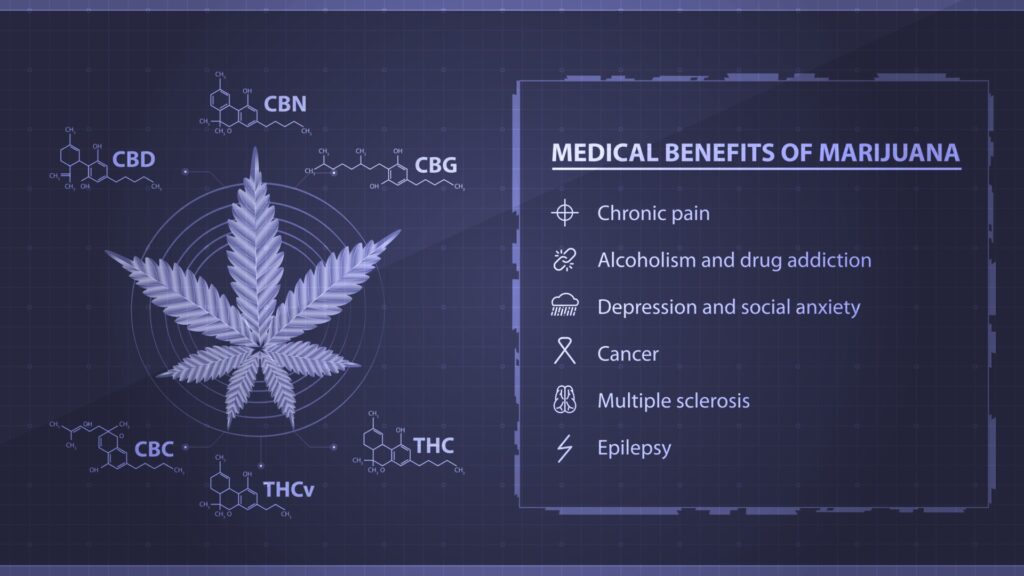
In 1996, California passed proposition 215 and became the first state to legalize cannabis for medical use. Public opinion was shifting back. A snowball was shaped by decades of scientific discovery that led to our current understanding of cannabis. One discovery led to another with knowledge of the endocannabinoid system (ECS) leading to the identification of CB1 and CB2 receptors.
CB1 receptors are most concentrated throughout the central nervous system including the brain. Receptors play a key role in a lot of functions like regulating mood, memory, pain sensation, and motor control. On the other hand, CB2 receptors are more abundant in the immune system and peripheral organs, influencing inflammation and immune responses. Together, these receptors explain how cannabis interacts with the body, affecting both mind and health.
The discovery of individual cannabinoids like CBD further shifted the conversation. Known for its numerous benefits, CBD is non-psychoactive. The psychoactive nature of THC is how it was stigmatized and villainized. Cannabis was no longer viewed through the lens of recreational use; there are recognized medical benefits. This reframing of cannabis as a tool for healing, rather than a symbol of counterculture rebellion, helped drive its acceptance.
By the late 2010s, the narrative surrounding cannabis had evolved dramatically. With legalization efforts sweeping the U.S. and beyond. When the pandemic hit, my anxiety developed into a full blown panic disorder. I owe my sanity and health to cannabis. My quality of life has made a complete 360. What was once a taboo subject to many transformed into a socially accepted treatment.
Scientific advancements have continued to enrich our understanding of cannabinoids. Recent research has highlighted their neuroprotective properties. They may protect the brain from damage and neurodegenerative diseases. The 2003 NIH patent on cannabinoids as antioxidants showed they can fight oxidative stress. This is a factor in several neurological conditions. Researchers have found over 100 cannabinoids, including THCV, CBG, and CBC. They may affect some bodily processes in a good way. These compounds interact with the ECS, influencing neurotransmitter release, inflammation, and pain perception. For neurodivergent individuals, cannabinoids like CBG may help. They affect serotonin and dopamine pathways. These same pathways are key for managing autism and ADHD.Culturally, cannabis has shed its long-standing stigma and gained mainstream acceptance. The rise of cannabis products, from gourmet edibles to CBD beauty items, reflects this shift. Veterans’ advocacy for cannabis’s benefits for PTSD and chronic pain has added credibility to its medicinal use and challenged outdated views. As we move toward full legalization in many parts of the world, cannabis’s story parallels my own journey. Changing from a symbol from my youthful rebellion to a recognized agent of healing and change. Its scientific and therapeutic potential is being explored. This reinforces its role in modern health and wellness.
Recent Developments
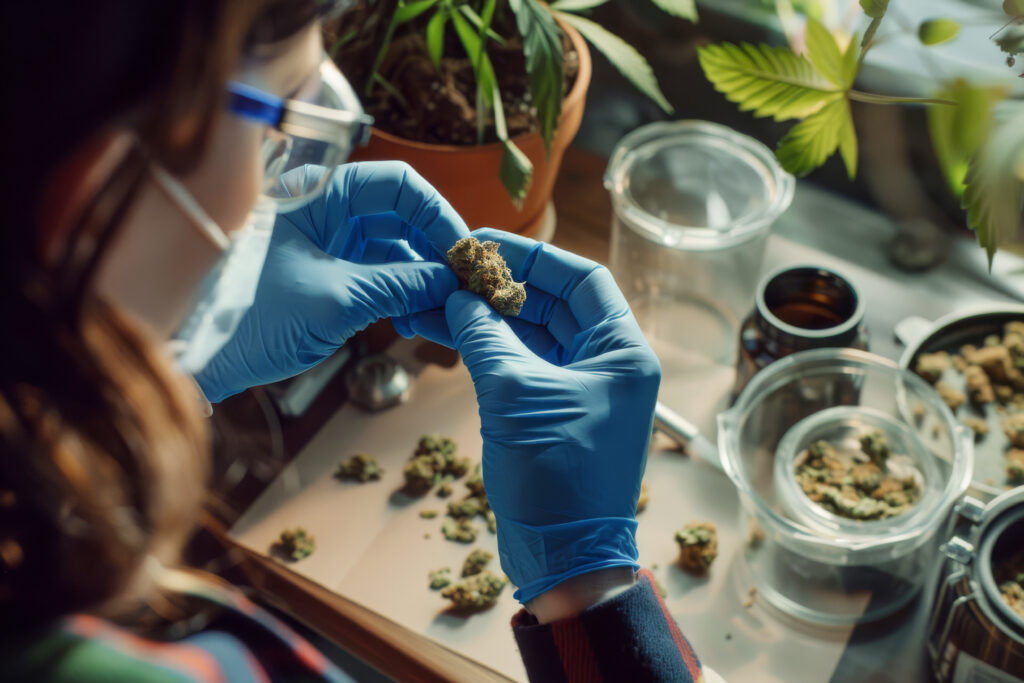
Science is expanding our knowledge of cannabinoids and their medical potential on a daily basis. A major breakthrough came with the previously mentioned 2003 NIH patent on cannabinoids as antioxidants. Studies showed they can fight oxidative stress, a cause of many neurological conditions. This discovery had broader implications. It revealed cannabinoids’ neuroprotective and anti-inflammatory effects. It marked a new era of exploration into their benefits beyond traditional uses.
As scientific insights deepened, the cultural landscape began to shift. Snoop Dogg and Martha Stewart helped normalize cannabis. Snoop Dogg’s well-known affinity for cannabis combined with Martha Stewart, the queen of polished dinner parties, became best friends as a publicity stunt. It is a fantastic story! The PR move was a one time guest appearance by Snoop on Martha’s show. But it was obvious that they had best friend chemistry right from the start. Something meant as a joke blossomed into a friendship that is still strong today.
Growing political support for cannabis legalization has mirrored this cultural shift. More policymakers now support legalization. This reflects a growing public consensus for reform. Polls show rising support for both medical and recreational cannabis. Many states have legalized or decriminalized it. This changing legal landscape reflects a shift in attitudes toward cannabis and its benefits.
On a personal level, these developments resonate deeply with my own journey. The growing research on cannabinoids and their benefits has renewed my faith in my experiences. The rise of cannabis, due to its supporters and new laws, aligns with my growing appreciation for its healing properties. Also, studies show that cannabinoids can modulate neurotransmitter systems. This may help with neurodivergent conditions. Research suggests that THCV may help with anxiety and ADHD by affecting neurotransmitters and reducing oxidative stress. CBG shows promise in aiding brain health. This could help those with neurodegenerative diseases or cognitive impairments.
These changes show a wider acceptance of cannabis. They also confirm its value in modern health and wellness. As cannabis evolves from a stigmatized substance to a healing tool, we need regulations. Though cannabis is beneficial, we need regulations on growing. Heavy metals and other components in unregulated soil and water are dangerous.
The Future of Cannabis
As research into cannabis continues to evolve, exciting new directions are emerging. Scientists are exploring the plant’s effects on various health issues. These include chronic pain, anxiety, neurological disorders, and cancer. Current studies are looking into cannabinoids. They may relieve symptoms, protect the brain, and improve quality of life. Future breakthroughs may reveal new uses for cannabinoids. They may also improve our understanding of how cannabinoids affect various body systems.
Culturally, societal views on cannabis are likely to shape its future significantly. As normalization continues, public support and new laws drive it. Cannabis use may then become part of mainstream health and wellness practices. The influence of key figures and changing attitudes could speed up legalization and increase acceptance. But, we must have informed discussions. They are vital to address risks and keep a balance of views. This discourse will help navigate the complexities of cannabis use and its implications for society.
I am very interested in studies on cannabis’ effects on neurodivergent people. Studying cannabinoids’ effects on ADHD, autism, and other conditions could provide insights leading to better, personalized treatments. As research advances, we must explore these aspects. It’s key to grasp cannabis’s potential benefits and challenges for diverse populations.
Conclusion
Cannabis’s journey from ancient remedy to modern therapy shows a great change in science and society. As we navigate this transformation, it’s crucial to recognize the duality of its promise and complexity. The endocannabinoid system is a promising area for medicine. It suggests that cannabis has vast therapeutic potential. Cannabinoids like THC and CBD may help with chronic and neurological disorders. We must conduct an in-depth examination of over 100 cannabinoids and their effects. To gain a complete understanding of their benefits.
Cannabis’s cultural shift reveals a deeper transformation in society. Once marginalized, cannabis is now a symbol of progress. It has influenced politics and consumer products. This shift shows a growing acceptance of alternative medicine. It also reflects changing views on drug policy. Military veterans and political leaders have been key to this change. They show how advocacy and new views can reshape public discourse.
As we embrace cannabis’s changing role, we must find a balance. The historical and cultural contexts deepen our understanding. Continuous studies and rigorous examination guarantee responsible use of its benefits. By blending ancient knowledge with modern innovation, we can create a future where cannabis is both a testament to history and a beacon of health.

